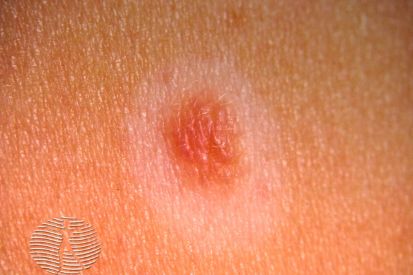Moles
At Pinehurst Dermatology & Mohs Surgery Center, our skin experts carefully examine moles to detect any signs of irregularity or change. During your skin check, they’ll also offer advice on sun protection to help prevent new moles. Explore more about moles below and schedule your skin check with one of our providers today.
Examples of Moles




What are the Symptoms of Moles?
- Moles can be either raised or flat.
- The surface of the mole can be smooth or wrinkled and some may contain hair.
- Though generally brown or flesh-colored, moles may also appear tan, black, red or blue.
- As the body ages, moles may lighten in color, flat moles may become raised, and some moles may disappear.
Causes of Moles
- Genetics (Family History): Our genetic code significantly influences mole development.
- Sun Exposure: Spending time under the sun contributes to the appearance of moles.
- Hormonal Changes: Life events like pregnancy, marked by hormonal fluctuations, can influence the number of moles.
- Age: As we age, our skin accumulates more moles.
How to Prevent Moles
- Sun Protection: Shielding your skin from excessive sun exposure is crucial. Make sunscreen with at least SPF 30 a daily habit, even on cloudy days. Wear protective clothing, like hats and long sleeves, and seek shade during peak sunlight hours.
- Avoid Tanning Beds: Artificial tanning methods, such as tanning beds, can contribute to the development of moles. Opt for sunless tanning lotions or sprays as a safer alternative if you desire a sun-kissed glow.
- Regular Skin Checks: Keep an eye on your skin and monitor any changes in moles. If you notice alterations in size, shape, or color, or if new moles appear, consult one of our trusted skincare specialists promptly. Early detection can be crucial in preventing potential issues.
- Avoid Hormonal Fluctuations: While some hormonal changes are natural and inevitable, minimizing exposure to unnecessary hormonal fluctuations, such as those caused by certain medications, can be beneficial.
Moles FAQs
Most moles are harmless, but it’s important to monitor them for changes in size, shape, color, or texture, as these can be signs of skin cancer, particularly melanoma.
Use the ABCDE rule to assess moles: A for Asymmetry, B for Border irregularity, C for Color variation, D for Diameter larger than 6mm, and E for Evolving over time. If you notice any of these signs, see a dermatologist as soon as possible.
While you can’t completely prevent moles, limiting sun exposure and using sunscreen can reduce the risk of developing new moles and help protect existing ones from becoming cancerous.
No, not all moles need to be removed. Removal is typically recommended if a mole shows signs of being abnormal, is in a location that causes irritation, or for cosmetic reasons.
Yes, moles can change over time, particularly in response to hormonal changes (such as during puberty or pregnancy) or sun exposure. Regular self-examinations as well as skin checks by a dermatology provider are key.
From Our QuaDerm Family of Brands: Total Body Skin Exams Explained
How to Treat Moles
Our team of dermatology providers can assess the mole's characteristics, considering factors such as size, shape, and color, to determine the most suitable course of action. Professional evaluation is especially vital when dealing with moles that exhibit irregularities or changes over time. Therefore, if you notice any changes in your moles or have specific cosmetic or discomfort-related concerns, consulting your dermatologist is a proactive step toward gaining healthy skin.
Featured Products for Sun Protection
Check your local office for current stock!
Check your local office for current stock!
